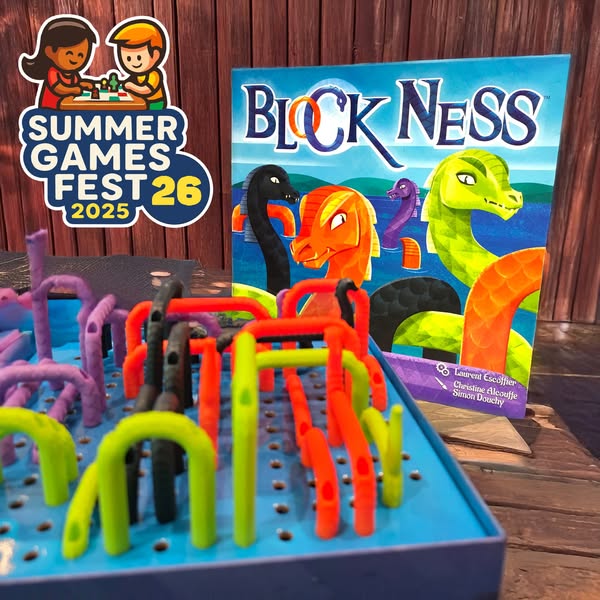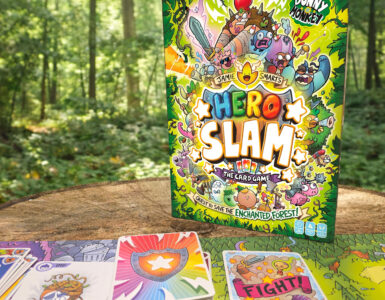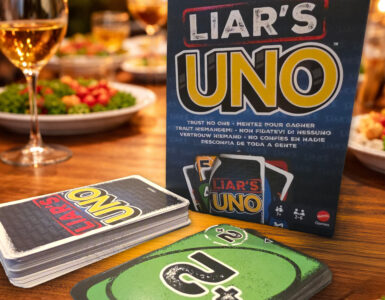We last spoke about Block Ness during the 2023 Summer marathon, and while it has remained popular and has found new love through Henry(4), I am a bit more critical of it than I was 4 years ago.
Block Ness is a fairly simple game that’s best described as 3D multiplayer Tron or Snake, for the Nokia 3210 owners among us.
You each pick a colour for your Loch Ness Monster and start with your shortest pieces (which, worth noting, vary slightly between colours). On your turn, you add a new piece to either the head or tail, elongating your monster as you go. You can’t go under existing monsters and you’re not allowed to cover heads or tails. Pieces must go adjacently, not diagonally, which sounds simple but can be a tricky concept for younger players.
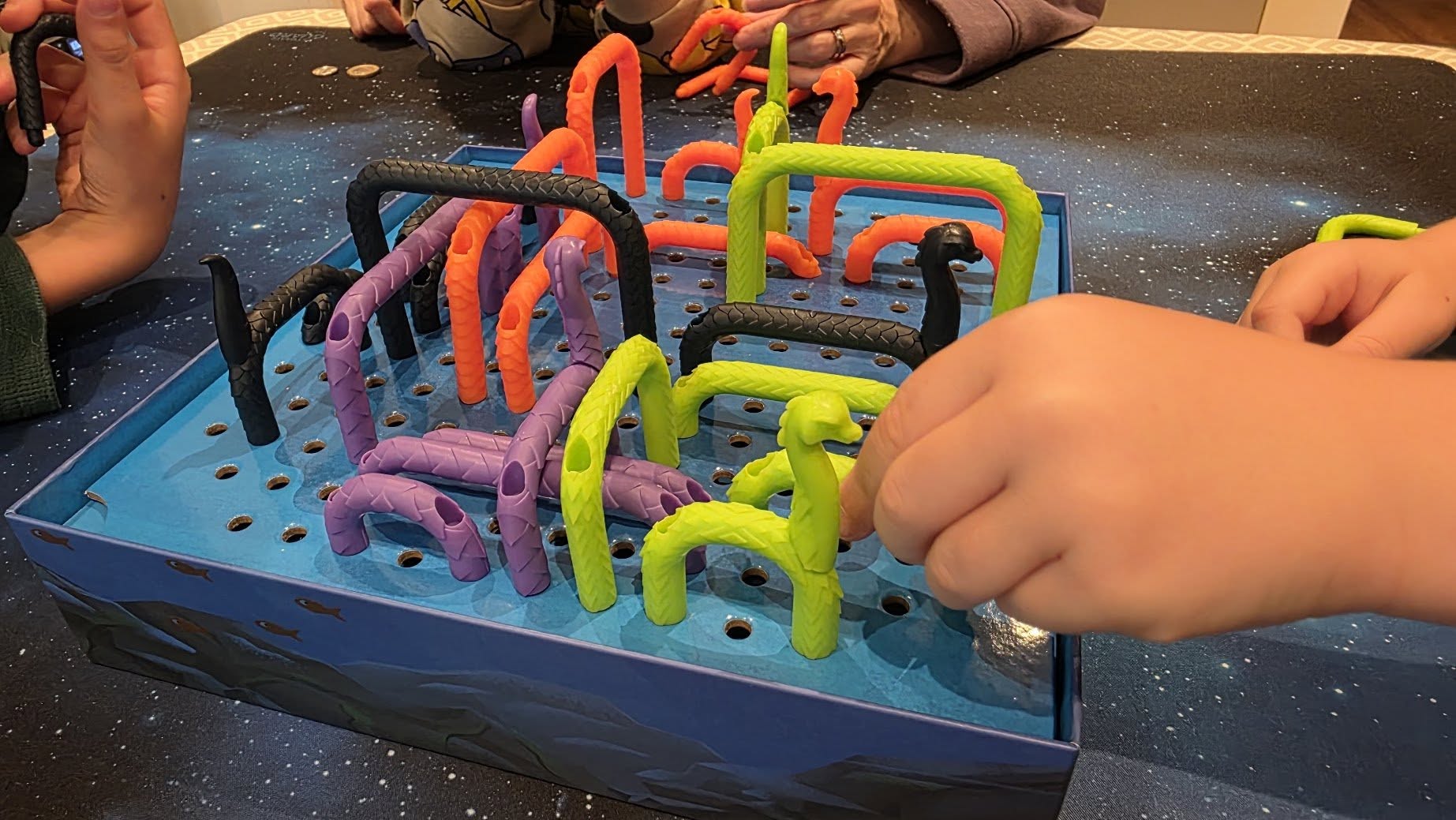
What makes this really sing, though, is the spatial strategy. You’re constantly choosing between placing your tall pieces early to block opponents or holding them back in case someone blocks you. It’s a clever little game of spatial awareness, future planning, and a bit of gentle blocking nastiness.
Gameplay ends when no one can place another piece. Whoever has the fewest remaining wins. It’s fast, good fun, and mostly very easy to teach.
Now, onto the niggles, some I mentioned last time and some that have become more noticeable with time. First, player count. It’s definitely a bit tight with four players and slightly too open with two. Three players is my favourite, though if you’re playing with younger kids, you could always use the larger board space regardless of the player count to help them ease in.
Component quality is excellent. It fits in the box nicely and looks fantastic on the table. The toyetic nature of the monsters—chunky, brightly coloured plastic with a kind of LEGO feel means it’s also just fun to play with. Henry (4) absolutely loves fiddling with the bits even when we’re not playing.
But the balance… it’s not great. Each colour starts with a slightly different set of pieces, and over time we’ve come to feel that some monsters are clearly better than others. Add to that the fact that turn order massively favours whoever goes first. Going third or fourth feels like a real disadvantage, especially at four players. If you’re playing with younger ones, I’d 100% recommend letting them go first to keep it fun.
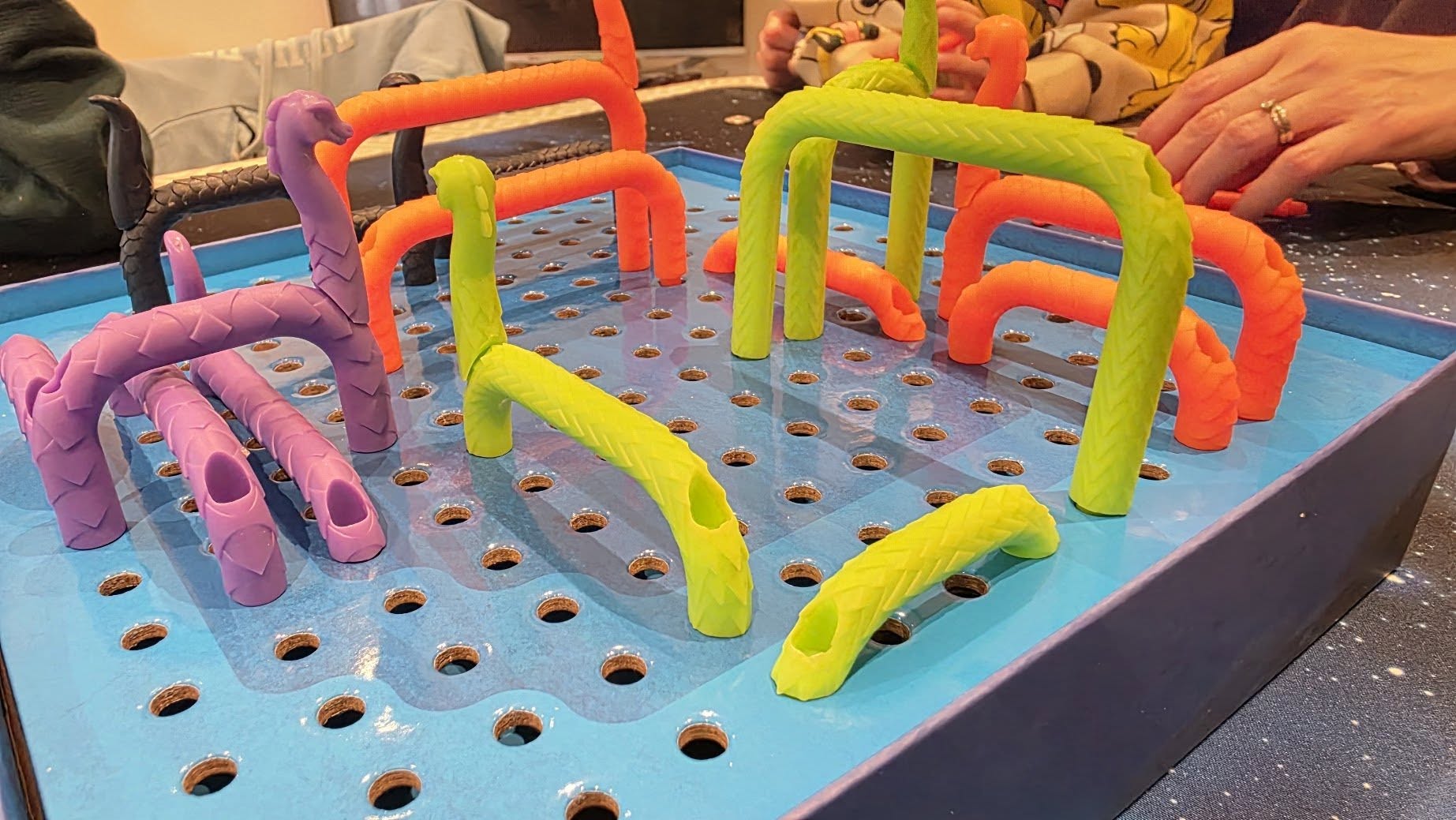
If you’re playing with two, we’ve had success letting each player control two colours. I recommend the P1–P2–P2–P1 order for the best balance. We also toyed with the idea of doing a P1-P2-P3-P4-P4-P3-P2-P1 turn order in 4-player mode but as usual my policy prevents me from including house rules in a review (but that does seem to add some balance).
It’s also worth noting that Block Ness is available in the USA with different box art—but the game itself is exactly the same.
Two years ago, I gave this a Definitely, which is the highest rating I give. After many, many more plays, especially at higher player counts, I’d now nudge it down to just a Yes. Still a strong recommendation, still a family favourite, but the flaws in balance are more obvious the more you play.
There still isn’t much like it out there, and it’s a brilliant entry-level abstract strategy game with a very cool table presence. If you can forgive its quirks, it’s a unique, playful experience, especially for younger players.


